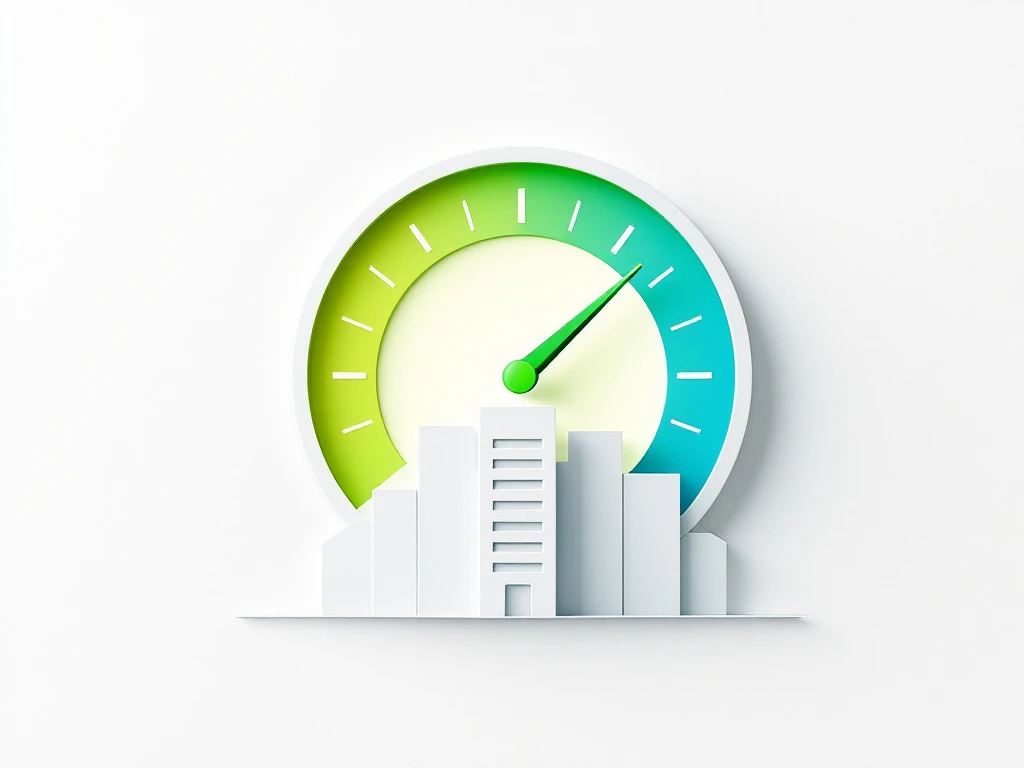
Andres Fellenberg Van der Molen
Director at Green Partner Europe | Hotels Specialist | Sustainability | Energy Efficiency | Circular Economy | Zero Waste | CSR | ESG | SDG

What is ISO 50001 certification and why does it matter?
ISO 50001 provides a framework for organizations to establish effective energy management systems (EnMS). This international standard enables businesses to develop policies for more efficient energy use, set targets for energy reduction, and implement systematic approaches to achieve continuous improvement in energy performance. Through strategic energy planning and data-driven decision making, organizations can reduce costs, minimize environmental impact, and strengthen competitive advantage while meeting regulatory requirements.
What is ISO 50001 certification?
ISO 50001 represents an internationally recognized standard that specifies requirements for establishing, implementing, maintaining, and improving an energy management system. Developed by the International Organization for Standardization (ISO) and first published in 2011, this framework helps organizations systematically optimize their energy performance and reduce consumption.
The standard follows the management system approach common to other ISO frameworks, built on the Plan-Do-Check-Act (PDCA) cycle for continuous improvement. Core components include energy policy development, energy planning processes, implementation of energy-saving measures, performance evaluation, and management review.
Within the broader ISO family, ISO 50001 complements other management system standards like ISO 9001 (quality) and ISO 14001 (environmental) but specifically targets energy efficiency. Organizations seeking ISO 50001 certification must demonstrate their compliance through assessment by an accredited certification body, which verifies the organization has established appropriate energy objectives, implemented effective monitoring systems, and committed to ongoing energy performance improvement.
How does ISO 50001 certification work?
The ISO 50001 implementation process follows a structured methodology centered around the Plan-Do-Check-Act framework. Organizations begin by conducting comprehensive energy reviews to establish their baseline energy consumption patterns and identify significant energy uses (SEUs).
In the planning phase, companies develop energy performance indicators (EnPIs) to measure progress, set objectives and targets, and create action plans. Implementation involves executing these plans while ensuring proper documentation, training, and operational controls.
The certification journey typically involves:
- Gap analysis to assess current energy management practices
- Development of energy policy and objectives
- Establishment of energy baseline and performance indicators
- Implementation of energy management documentation and processes
- Internal audit to verify compliance
- Management review
- Pre-certification assessment by the certification body
- Final certification audit
Once certified, organizations undergo periodic surveillance audits, typically annually, with recertification required every three years to maintain their ISO 50001 status and demonstrate continued improvement in energy performance.
What are the benefits of ISO 50001 certification?
Implementing an ISO 50001-certified energy management system delivers multiple advantages across operational, financial, and reputational dimensions. Organizations typically experience significant reductions in energy consumption, leading to substantial cost savings on utility bills and related operational expenses.
From an environmental perspective, decreased energy usage directly translates to reduced greenhouse gas emissions and smaller carbon footprints, supporting broader sustainability goals. The systematic approach to energy management also helps organizations identify previously overlooked inefficiencies and optimization opportunities.
Additional benefits include:
- Enhanced compliance with energy-related regulations and legislation
- Improved organizational reputation among stakeholders and customers
- Competitive advantage in markets that value sustainable practices
- Better preparedness for future energy price fluctuations
- Increased employee awareness and engagement in energy conservation
While specific results vary by industry and organization size, research consistently shows that systematic energy management leads to meaningful improvements in energy performance and operational efficiency.
How much does ISO 50001 certification cost?
The financial investment for ISO 50001 implementation and certification varies significantly based on organizational size, complexity, existing management systems, and current energy performance. Organizations should consider several cost categories when budgeting for certification.
Initial costs typically include consultation fees for gap analysis and system development, which can range from modest amounts for small organizations to substantial investments for large enterprises with complex energy uses. Implementation expenses cover documentation development, staff training, and potentially new monitoring equipment or software.
The certification process itself involves audit fees from the chosen certification body, including pre-assessment and formal certification audits. Following certification, ongoing costs include surveillance audits, system maintenance, and continuous improvement initiatives.
While the upfront investment may seem significant, many organizations achieve positive return on investment through energy cost savings. Energy-intensive operations frequently report ROI timelines of 1-3 years, with continued savings thereafter that significantly outweigh the initial certification expenses.
Who needs ISO 50001 certification?
While ISO 50001 certification can benefit virtually any organization concerned with energy efficiency, it provides particular value to energy-intensive sectors. Manufacturing operations with significant machinery and production processes typically realize substantial benefits through systematic energy management. Similarly, data centers, with their considerable cooling and electrical requirements, often find ISO 50001 implementation highly advantageous.
Other sectors where ISO 50001 certification proves especially valuable include:
- Hospitality businesses (hotels, resorts) with continuous energy demands
- Healthcare facilities operating energy-intensive equipment 24/7
- Transportation and logistics companies managing fuel consumption
- Commercial property managers overseeing multiple buildings
- Educational institutions with large campus infrastructures
Organization size is not necessarily a limiting factor, as the standard is designed to be scalable. Small and medium enterprises can implement ISO 50001 by focusing on their most significant energy uses, while larger corporations may develop more comprehensive systems across multiple sites. The common denominator is the potential for meaningful energy savings through systematic management.
How is ISO 50001 different from other management standards?
ISO 50001 shares the same high-level structure (HLS) with other management system standards but specifically focuses on energy performance improvement. While ISO 14001 addresses broader environmental impacts including waste, emissions, and resource use, ISO 50001 concentrates exclusively on energy consumption and efficiency. This specialized focus enables more detailed attention to energy-specific metrics and performance improvements.
Compared to ISO 9001, which centers on quality management and customer satisfaction, ISO 50001 emphasizes measurable energy performance outcomes. A distinctive feature of ISO 50001 is its requirement for demonstrable improvement in energy performance, going beyond simply establishing a management system.
Organizations already implementing other ISO standards benefit from integration opportunities. The shared structure allows for aligned documentation, combined audits, and streamlined processes when implementing multiple standards. Many organizations successfully integrate ISO 50001 with ISO 14001 to create comprehensive environmental and energy management systems that address both general environmental impacts and specific energy concerns.
What challenges might organizations face when implementing ISO 50001?
Despite its benefits, ISO 50001 implementation presents several common challenges. Many organizations struggle with resource constraints, particularly when establishing comprehensive energy monitoring systems that may require investment in metering equipment and analysis software. Collecting accurate energy data across various operations and establishing meaningful baselines can be technically complex, especially in facilities with limited existing monitoring infrastructure.
Securing sustained management commitment can be difficult when competing with other business priorities, particularly if energy costs represent a relatively small portion of operating expenses. Organizations often face resistance to change from personnel accustomed to established practices, making cultural transformation a significant hurdle.
Practical solutions to these challenges include:
- Starting with high-impact areas that promise substantial savings
- Phasing implementation to distribute resource requirements
- Conducting thorough staff engagement and training programs
- Demonstrating early wins to build momentum and support
- Leveraging external expertise from experienced consultants
By anticipating these obstacles and developing strategic approaches to address them, organizations can navigate the implementation process more effectively.
ISO 50001 certification: Essential steps for successful implementation
Achieving ISO 50001 certification requires thorough preparation and strategic implementation. Begin by securing explicit top management commitment, as this provides necessary resources and organizational buy-in. Conduct a comprehensive energy review to identify significant energy uses and establish your energy baseline—this foundational step ensures you target efforts where they’ll deliver maximum impact.
Develop meaningful energy performance indicators tailored to your operations and set realistic improvement objectives with clear timelines. Document your energy management system comprehensively, ensuring policies and procedures are accessible to all relevant personnel. Implementation succeeds when energy management becomes integrated into daily operations rather than existing as a separate program.
Regular internal audits help identify opportunities for improvement before external assessment. When selecting a certification body, look for accredited organizations with relevant sector experience. With Green Partner’s specialized knowledge in energy management systems, we can guide you through this entire journey, from initial assessment to certification and beyond, ensuring your organization develops an effective, sustainable approach to energy management that delivers long-term value.
